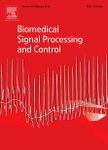版权所有:内蒙古大学图书馆 技术提供:维普资讯• 智图
内蒙古自治区呼和浩特市赛罕区大学西街235号 邮编: 010021

作者机构:Sharif Univ Technol Fac Math Sci Tehran Iran
出 版 物:《BIOMEDICAL SIGNAL PROCESSING AND CONTROL》 (生物医学信号处理与控制)
年 卷 期:2021年第68卷第0期
页 面:102787-102787页
核心收录:
学科分类:0831[工学-生物医学工程(可授工学、理学、医学学位)] 10[医学]
主 题:Sparse representation Joint dictionary learning Multi-class segmentation Skin lesion Graph-cuts
摘 要:Melanoma is the deadliest type of human skin cancer. However, it is curable if diagnosed in an early stage. Recently, computer aided diagnosis (CAD) systems have drawn much interests. Segmentation is a crucial step of a CAD system. There are different types of skin lesions having high similarities in terms of color, shape, size and appearance. Most available works focus on a binary segmentation. Due to the huge variety of skin lesions and high similarities between different types of lesions, multi-class segmentation is still a challenging task. Here, we propose a method based on joint dictionary learning for multi-class segmentation of dermoscopic images. The key idea is based on combining data from different feature spaces to build a more informative structure. We consider training data from two different spaces. Then, two dictionaries are jointly learned using the K-SVD algorithm. The final segmentation is accomplished by a graph-cut method based on both the topological infor-mation of lesions and the learned dictionaries. We evaluate our proposed method on the ISIC 2107 dataset to segment three classes of lesions. Our method achieves better results, specially for challenging skin lesions, compared to the only available method for multi-class segmentation of dermoscopic images. We also evaluate the performance of our method for binary segmentation and lesion diagnosis and compared the results with the other state-of-the-art methods. Experimental results show the efficiency and effectiveness of the proposed method in producing results that are more reliable for clinical applications, even using limited amount of training data.